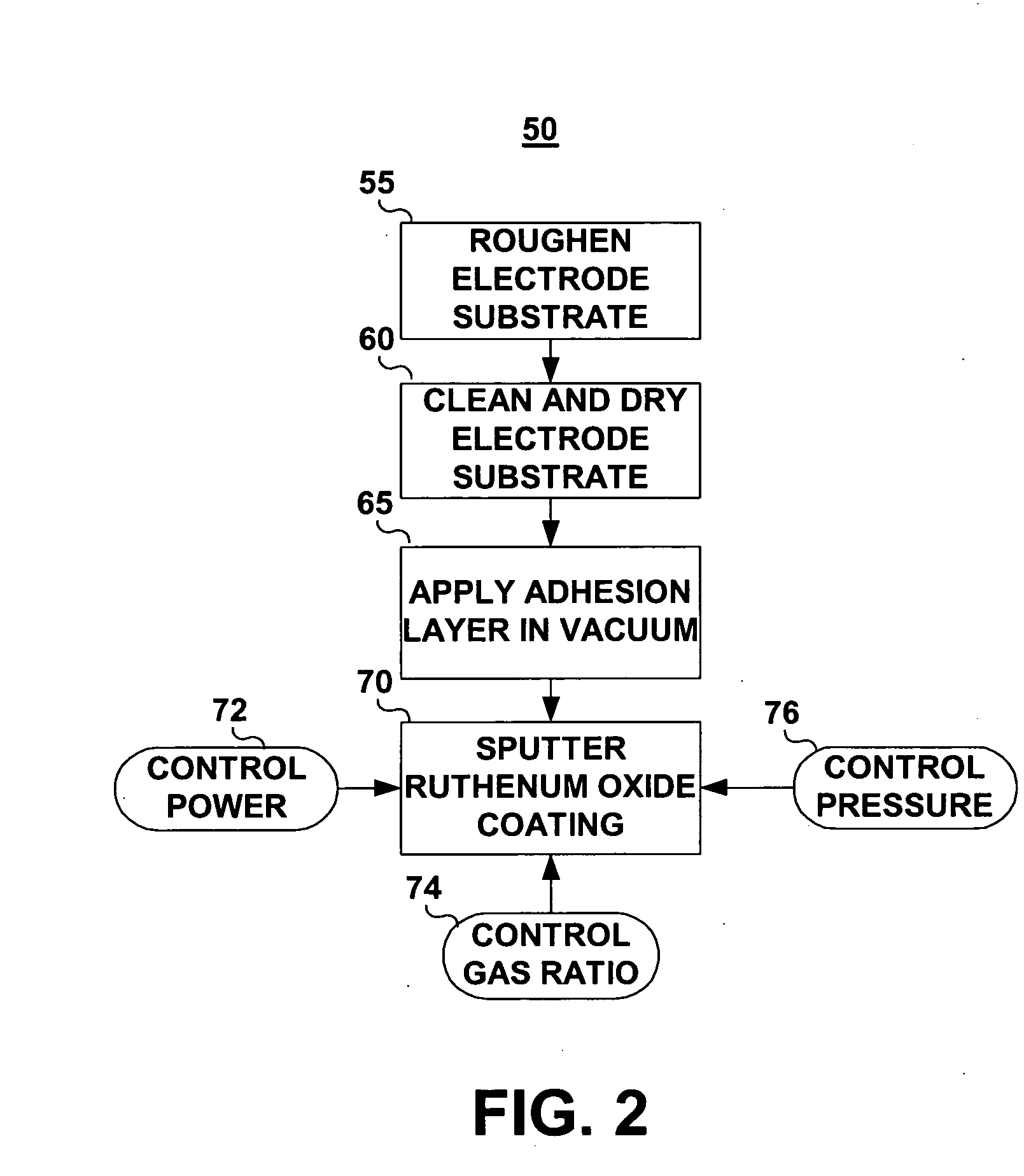Method for fabrication of low-polarization implantable stimulation electrode
a low-polarization, electrode-based technology, applied in the direction of manufacturing tools, superimposed coating processes, therapy, etc., can solve problems such as interference with cardiac signal sensing, and achieve the effect of preventing oxidation of the adhesion layer surface and preventing delamination of the ruox coating
- Summary
- Abstract
- Description
- Claims
- Application Information
AI Technical Summary
Benefits of technology
Problems solved by technology
Method used
Image
Examples
Embodiment Construction
[0011]FIG. 1 is a plan view of one type of cardiac pacing lead in which the invention may usefully be practiced. In the case of FIG. 1, the lead is an endocardial pacing lead provided with an elongated insulative outer sheath 10 which carries two mutually insulated conductors 12 and 13; illustrated schematically. At the proximal end of the lead is an in-line bipolar connector assembly 14 which may correspond to the IS-1 connector standard. Connector assembly 14 is provided with a connector ring 16 coupled to conductor 12 and a connector pin 18 coupled to conductor 13. Sealing rings 20 and 22 are provided to seal the connector assembly within the bore of an associated cardiac pacemaker and to prevent fluid leakage between connector ring 16 and connector pin 18.
[0012] The proximal end of the lead carries a pacing cathode 24 and a pacing anode 28. Pacing cathode 24 may be any known type of pacing cathode employed in the context of cardiac pacing leads, however, it is illustrated as ta...
PUM
| Property | Measurement | Unit |
|---|---|---|
| power | aaaaa | aaaaa |
| thicknesses | aaaaa | aaaaa |
| thickness | aaaaa | aaaaa |
Abstract
Description
Claims
Application Information
 Login to View More
Login to View More - R&D
- Intellectual Property
- Life Sciences
- Materials
- Tech Scout
- Unparalleled Data Quality
- Higher Quality Content
- 60% Fewer Hallucinations
Browse by: Latest US Patents, China's latest patents, Technical Efficacy Thesaurus, Application Domain, Technology Topic, Popular Technical Reports.
© 2025 PatSnap. All rights reserved.Legal|Privacy policy|Modern Slavery Act Transparency Statement|Sitemap|About US| Contact US: help@patsnap.com



